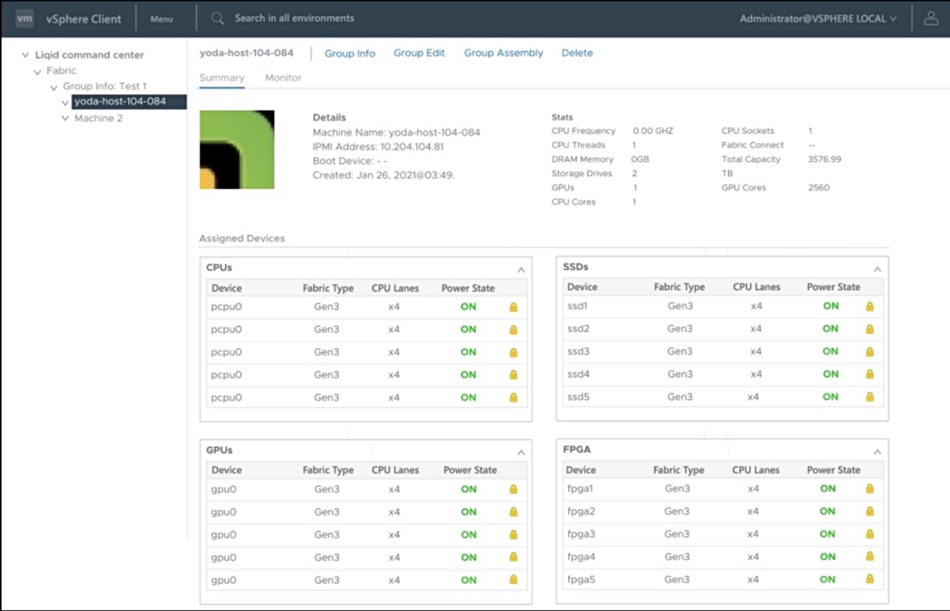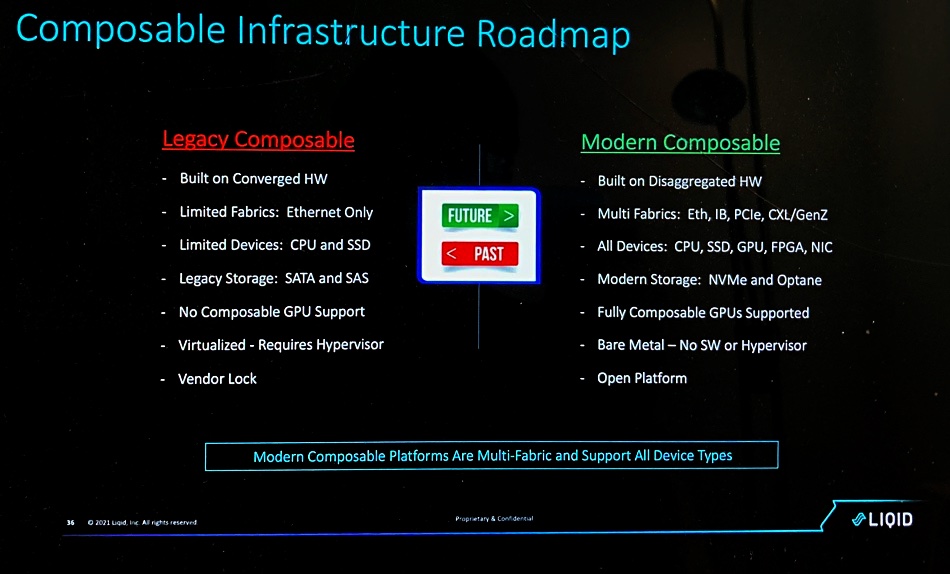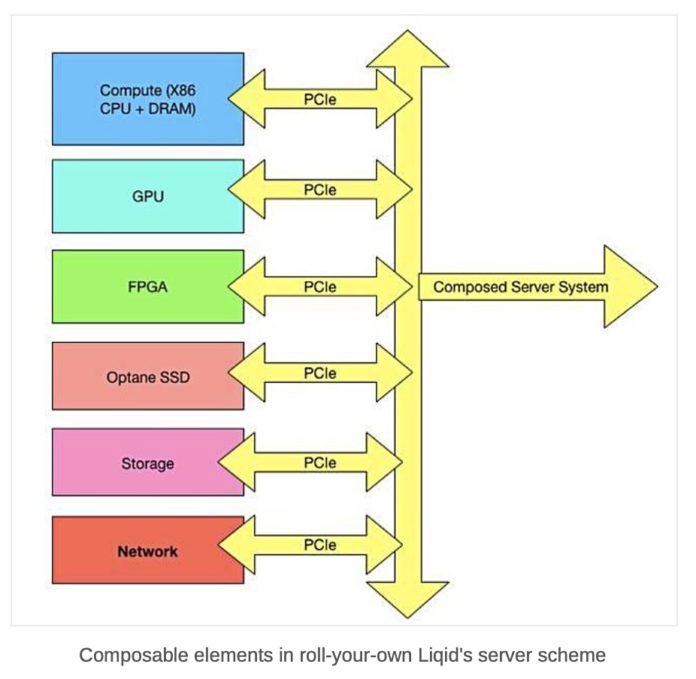VMware vCentre users can compose server systems using Liqid’s Matrix fabric software via a plug-in.
Liqid uses its X86-based Matrix software software, controlling a PCIe switch and fabric, to dynamically compose servers from separate pools of base server (CPU+DRAM) nodes, GPU, NVMe storage, Optane SSDs and network interface cards. These servers are then presented to server operating systems and applications as exactly equivalent to static bare metal servers with no change to any upstream software.
The idea is that server component utilisation increases by enabling the components to be dynamically allocated to composed servers designed to run specific workloads with no stranded resources. Up until now vCentre users have had to use Liqid’s own UI to compose the hardware infrastructure on which vSphere VMs will run. Now they will be able to do it within the vCenter environment.
Liqid co-founder and CEO Sumit Puri told an IT Press Tour briefing that: “Static infrastructure is dead. The lights-out, dynamic data centre is the future.”
A demo showed a vCenter admin moving servers components, such as GPUs, from one virtual machine to another. Puri said vSphere will be Liqid’s first supported hypervisor and others will follow, such as Nutanix’ AHV, KVM and Hyper-V.

Blocks & Files asked if Liqid will support composing disk drive storage for servers as the NVMe v2 specification adds rotating media to the NVMe support list: “Absolutely. 100 per cent yes” was the reply.
Partnerships
Liqid has an OEM agreement with Dell and supports its MX7000 box of composable blade servers. It is working with Inspur, the world’s number three server manufacturer, and also an un-named Japanese server vendor.
This relationship will help it enter the Japanese market as part of an Asia-Pacific geographic expansion, and it’s also hoping to have a presence in Australia. The company recently set up an EMEA office.
It is not partnering with HPE, which has its own Synergy composable infrastructure. Puri said Synergy was a $2bn business for HPE and differed from Liqid’s Matrix in that it disaggregated server components inside a converged infrastructure system. Puri showed a slide discussing legacy (Synergy) and future (Matrix) composability attributes in response to a question about his views on Synergy:

Matrix composes servers from separate pools of disaggregated components – different chassis full of NICs, GPUs, Optane drives, NAND SSDs, and so forth. Also Synergy supports SATA and SAS drives and is not PCIe fabric-based.
Blocks & Files thinks that, for Liqid, Synergy is gen 1 composability, Matrix is gen 2 composability and, when the CXL bus arrives, that will signal gen 3 composability.
Liqid directions
Puri said Liqid is developing policy-based composability, such that composed systems can be automatically adjusted to meet conditions. For example, if GPU utilisation goes above 80 per cent then add another GPU to the composed configuration. This requires telemetry from the composed servers with software recognising changing conditions and applying policies.
A next stage would be to have machine learning models developed to automatically compose servers for applications; to have machines defining machines.
Specific road map items include adding additional hypervisor support and working with Nvidia, “closely” Puri said, on a GPU-over-Fabrics concept, similar to NVMe-oF and its use of RDMA over Ethernet.
Liqid is quite lightly funded, having raised around $60m since being founded in 2015. It last raised $25m in a B-round in 2019. Puri said Liqid may have another fund raising round as it grows: “There’s $150 billion of total addressable market out there. … We’ll aim for an IPO.”






